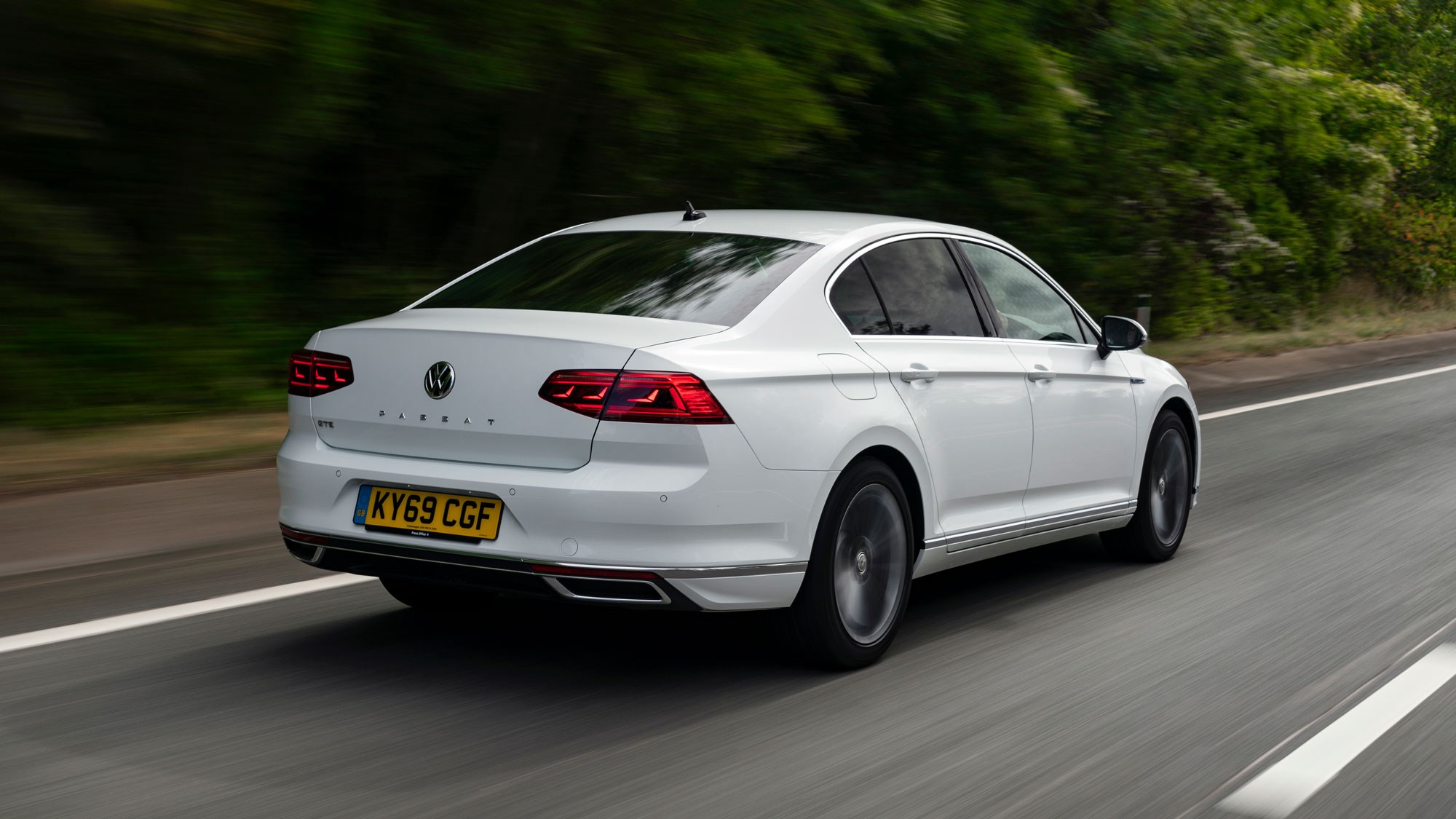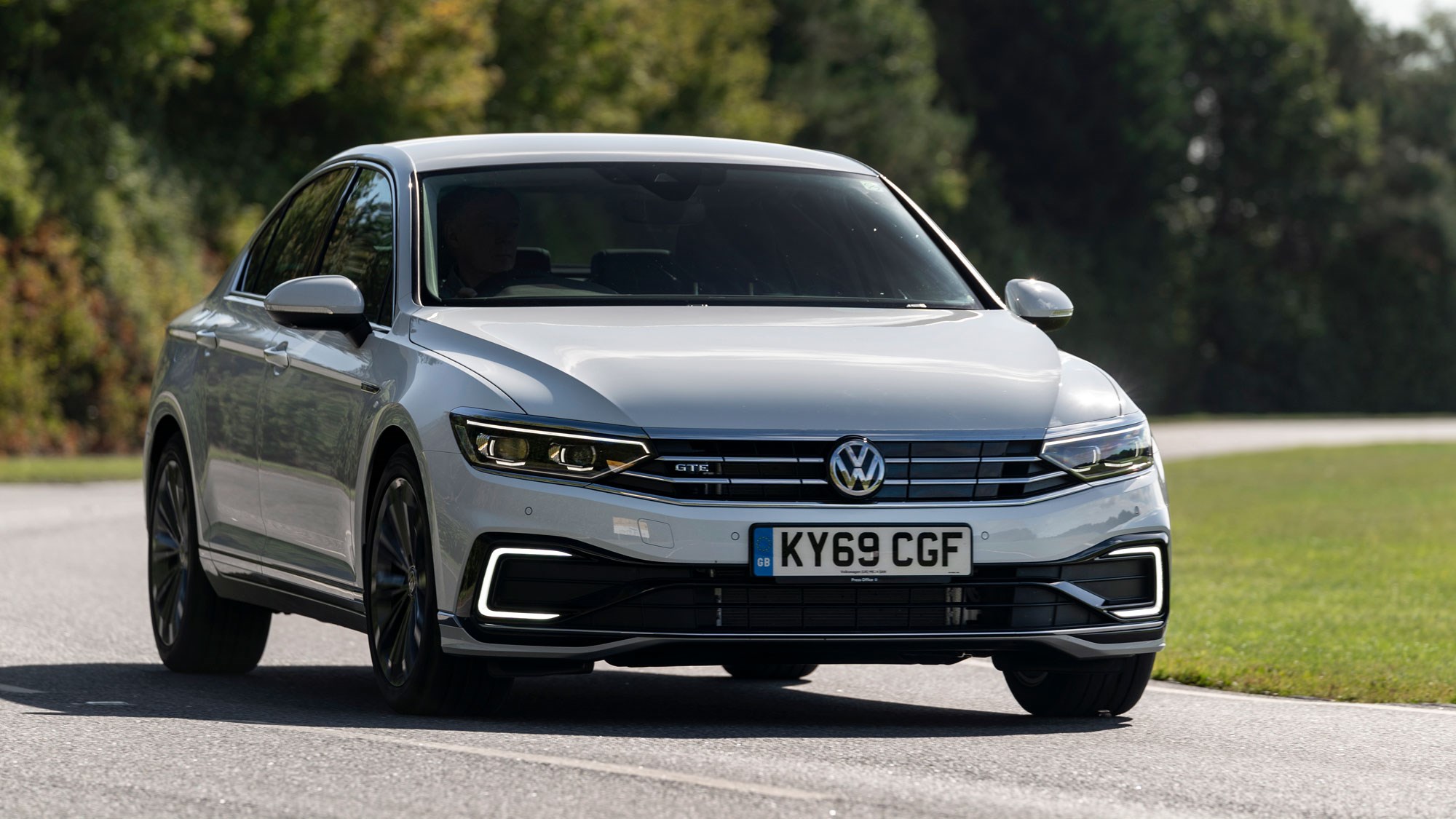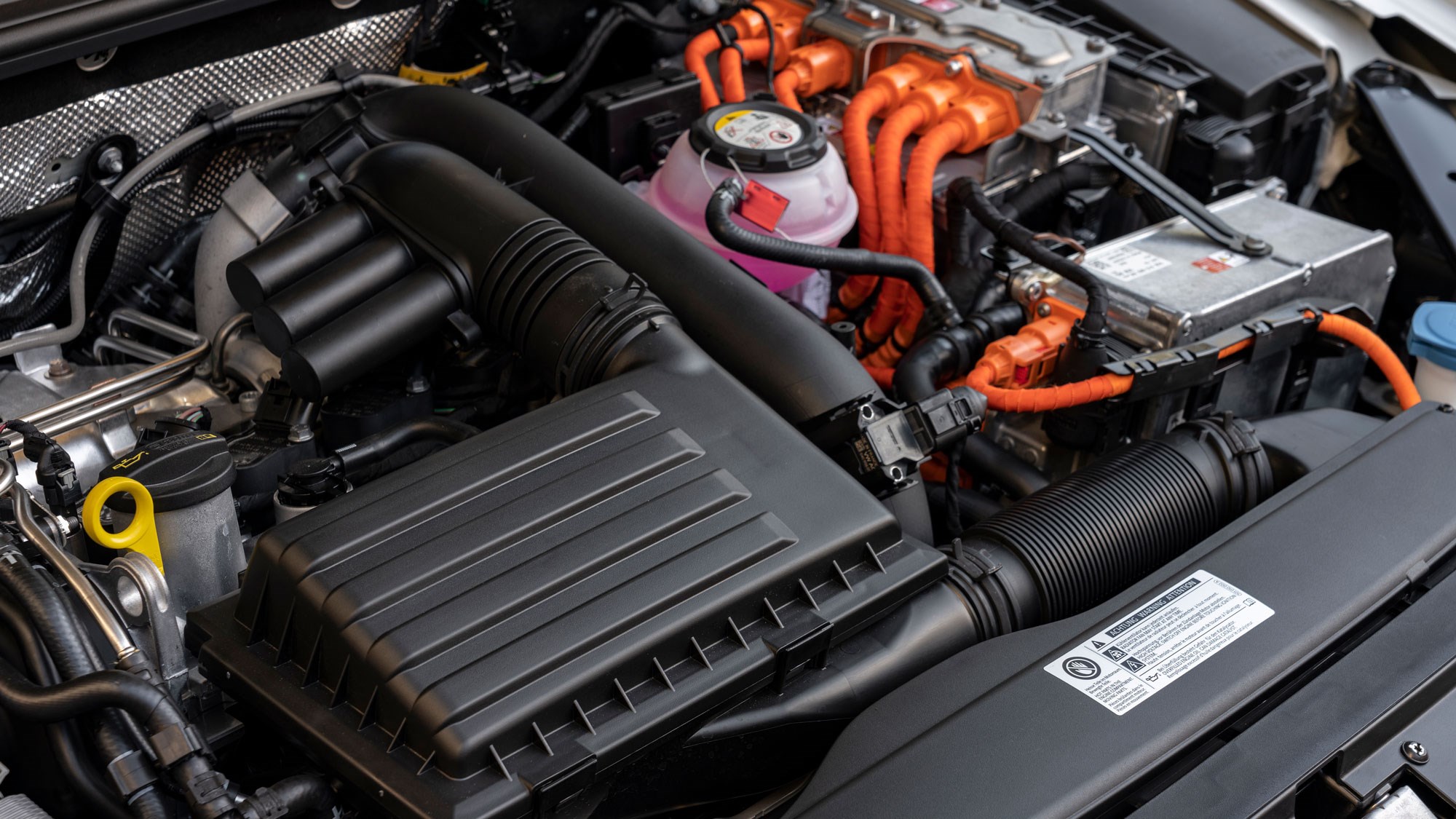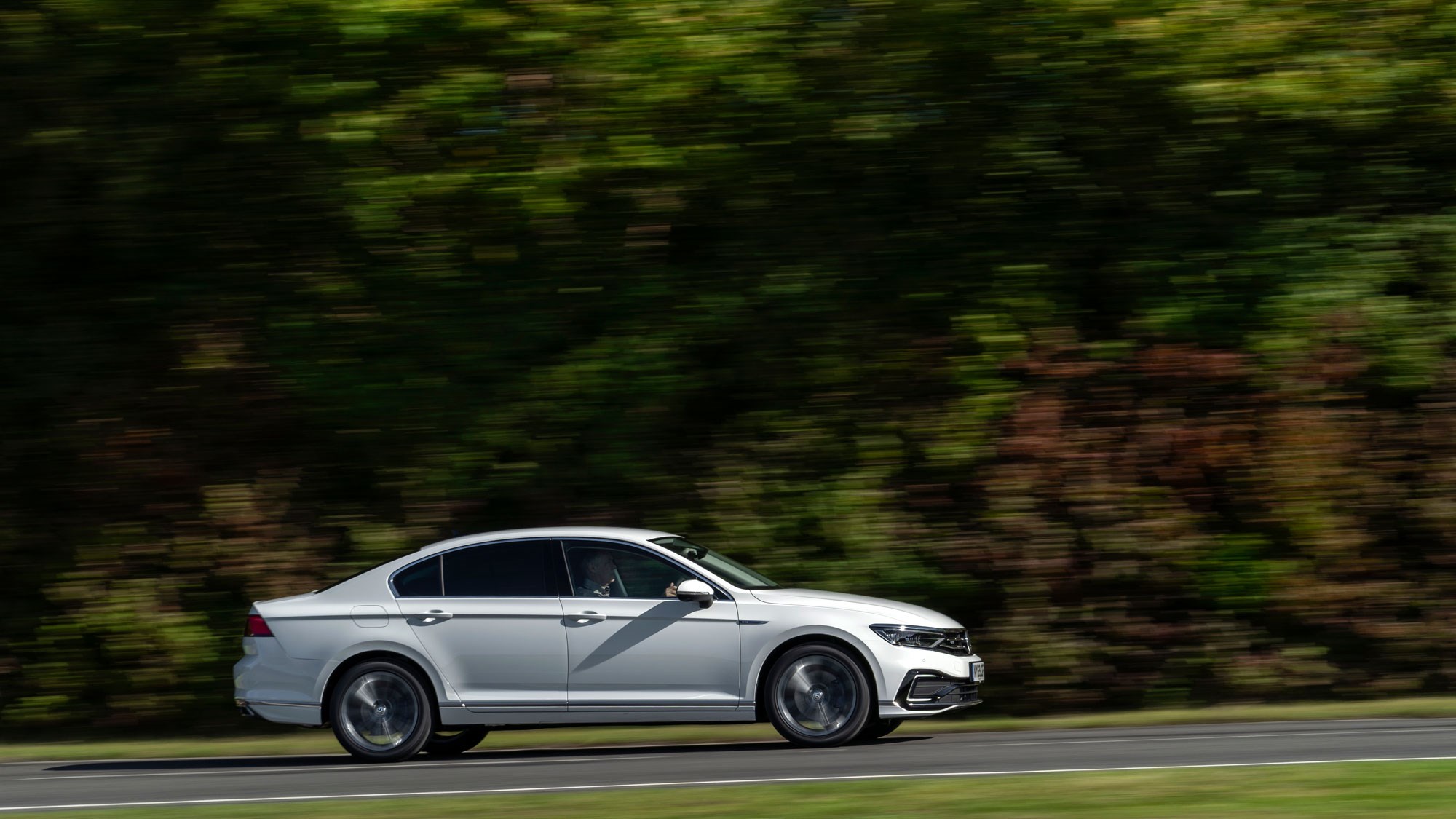► Selection of updates for VW’s saloon
► Diesel still popular, but what about petrol?
► New plug-in GTE tested too
We’ve been here before. Very successful Volkswagen car sells millions and millions of examples. Latest versions gets some updates, gets called Mk8.5 (or 7.5 for the Golf), continues to sell millions and millions of examples. End of story, right?
While there’s a strong chance that will happen, it’s probably best to dig a little deeper into what VW has changed about the Passat, the model it proudly notes as having the longest-running nameplate of any other model from Wolfsburg, having been around since 1973.

So here we are with the Mk8.5 Passat, complete with the suite of changes you’d expect it to have. We’ve already driven the Estate – the more popular body style – so why should you go for the less practical and less attractive saloon?
There’s tweaked styling and a nicer interior
It would be fair to call this a mild facelift – VW hasn’t really gone to town on updating the Passat’s look, but the changes made are enough to keep it looking current without overdoing it. There’s a bit more chrome here and there, altered bumpers, standard-fit LED lights all-round and some new wheels and colours. That’s about it.
Inside it’s a similar story. It’s still just as plush as it always has been on most models, with nice, squidgy plastics used throughout, a new steering wheel and not much else looks-wise. The bigger news is the tech that’s been thrown at the car, which you can read more about further down the page.
To be honest, the interior didn’t really need changing. It’s restrained and classy, with very little to complain about. The seating position is excellent and seat comfort very impressive. Just a shame the analogue clock has been replaced with a piece of plastic saying ‘Passat’ – in case you’d forgotten what car you’re driving.

There’s a good selection of engines
The usual choice of petrols and diesels are available – with a new 148bhp 2.0-litre TDI Evo engine expected to be the most popular (surprise surprise), although we haven’t driven that yet. What we have driven is the 2.0-litre TSI with 187bhp and the updated GTE plug-in with a combined output of 215bhp.
We were expecting the TSI to be a smooth and quiet performer that would be an easy recommendation for someone thinking of avoiding diesel. However, we came away a little disappointed. While it’s punchy enough with a 7.5-second 0-62mph time and works well with a DSG transmission – once you’ve got used to the gearbox’s hesitations at times. It’s more the car’s overall refinement that was a little surprising.
It settles down with no drama, but the road noise kicked up from the large wheels on R-Line models was disappointing, and the ride more fidgety than expected even with DCC adaptive dampers fitted. Not as well-rounded as an Audi fitted with a 2.0 TFSI, let’s just say that.
The good news is, despite UK buyers loving a sporty-looking model with massive wheels, the seats are excellent in the Passat. They’re supportive, they’re squishy and they’re accommodating, with plenty of adjustment – you’d do well to struggle to get comfortable, and stay comfortable.
Is the GTE any better?
The GTE has been updated with a new battery pack after the old one went off sale. It still uses a 1.4-litre TSI petrol with an electric motor for combined power output of 215bhp. More importantly, it’ll go longer in pure EV mode (VW calls it E-mode) – up to 31 miles, in fact.

It’ll try to drive in E-Mode all the time if there’s enough charge in the battery, so most of the time things are serene and calm, and really rather responsive. For more enthusiastic spurts there’s GTE mode where you get full system power, and for everything in between there’s Hybrid mode. If you want to charge the battery up using the engine, you can adjust this in a menu in a menu, found after selecting the E-mode button. Or you can save the battery at a certain level if you want to waft around in silence later on.
Just to keep things confusing, there’s another drive mode selection button (of the more traditional variety) to cycle between Eco, Comfort, Normal, Sport and Individual. So it’ll take a little while to learn where all these settings can be found and tweaked with.
On the go, however, the GTE is smooth and refined – unsurprisingly more so than the petrol or diesel variants. It’s responsive enough and the draw of driving around town just in E-mode remains as satisfying as ever. It’s also pretty rapid pulling away from junctions.
Any other tech?
Yes. This is where most other changes have been made across the Passat range. First up is the new Travel Assist system, standard-fit on all Passats and incorporating a new version of the firm’s adaptive cruise control system that now also features the ability to read road signs and adjust the set speed accordingly, while also slowing for junctions and bends. Lane assist also features and can now recognise kerbs and verges – not just road markings.

Other than that it’s largely stuff you’d expect – an updated infotainment system and the latest version of the firm’s Active Info Display. We’d urge you to specify these digital dials as – while there’s nothing wrong with the analogue setup – the small screen between the traditional dials makes the car feel very dated. It’s essentially the same item found in a Golf from several years ago.
The Active Info Display is far crisper and easy to configure via buttons on the redesigned steering wheel, while the main media display comes in either 8.0-inch or 9.2-inch sizes, dependent on whether you splash out for the upgrade or not. We’d wager the 8.0-incher is all you need, plus it comes with more useful shortcuts around the outside of the display.
Passat GTE verdict: should I buy it over rivals?
This is a tough one. There is nothing wrong with anything the Passat does – far from it. It’s handsomely-style, the interior is pleasant, the engine range is comprehensive and it comes loaded with a lot of equipment. The problem it has is that the Audi/BMW/Merc trio offer prestige that some buyers are after, a Tiguan SUV is more practical for a family and the Arteon offers more kerb appeal.
The biggest issue, however, comes in the form of the Skoda Superb. It’s now just as pleasant inside as the VW, has pretty much all the same kit available, it’s bigger inside, has a bigger boot and – crucially – costs less in the first place.